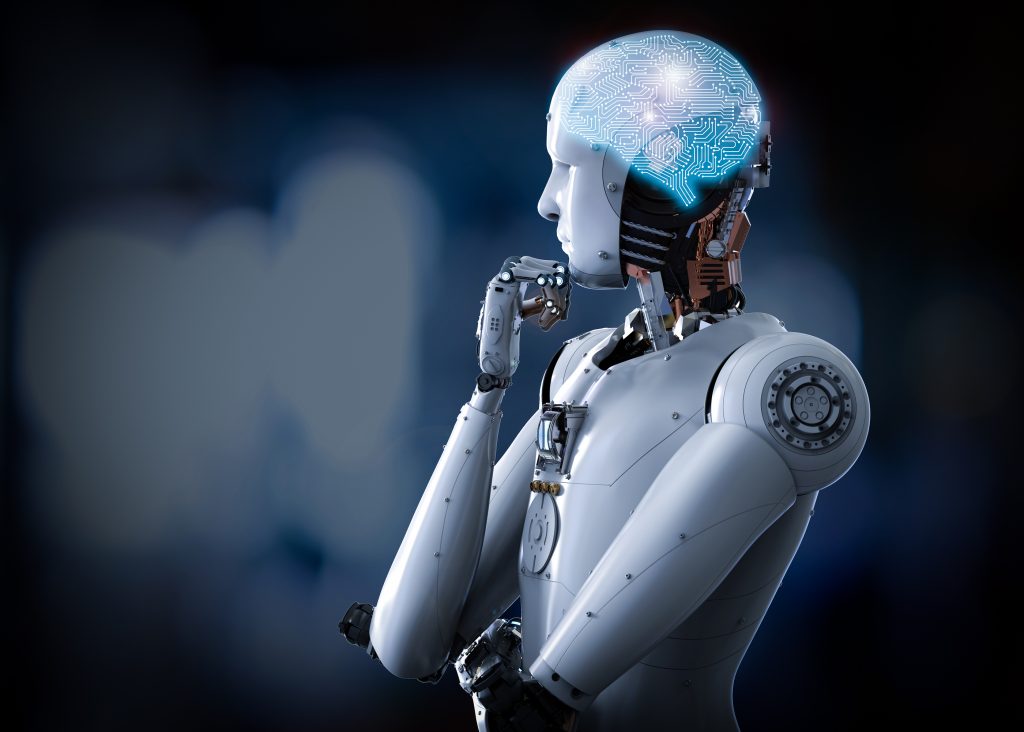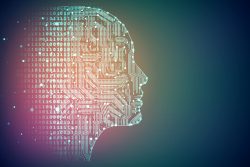Tech Trends: Artificial Intelligence
Since its invention in the 1950s, the visionaries of artificial intelligence (AI) predicted incredible and — at the time — outlandish capabilities for machine thinking. The technology has been around for sixty years, but the last decade has started to deliver on the wild speculations of yesteryear. Why is AI just now starting to live up to its promise? It turns out AI needed three key components to accelerate from its humble beginnings to a set of commercialized products that work in tandem with human intelligence to create new achievements in every business category.
So have we finally reached AI’s perfect storm?

Artificial intelligence at the tipping point
Alan Turing, a code breaker and computer scientist, first envisioned a “thinking machine” that mirrored and expanded on human problem-solving in a paper in 1950. The idea has since captivated writers and scientists alike. Engineers, computer scientists, and software developers contemplated, designed, tested, hit roadblocks, and made breakthroughs that edged us closer to the “technology singularity” — or when computers will be able to reason and think at human-levels.
Several breakthroughs today have finally edged us to the brink of true machine intelligence:
- Computing capacity: Graphics processing units (GPUs) process images and data up to 80 times faster than they did just four years ago. Last year, Google reported the development of “custom machine learning chips” that are 15 to 30 times faster than standard GPUs.
- New programming algorithms: Modern machine learning relies on a feedback loop that actually allows the computer to “learn” from any interaction. Think about the improvements to Siri and Alexa to understand the success of machine learning.
- Big data: Our ability to store and process information has grown tremendously over the last decade. According to the research firm Gartner, we’re capturing data from 4 billion connected devices today. When you add in the scalability of cloud data storage and predictive analysis, the stage is set for a breakthrough in the field of AI.
After decades of incremental growth, technological breakthroughs tied to AI are happening faster than ever before in a variety of industries.
- Accessibility of AI: Google is offering cloud AI algorithms for developers interested in creating their own object and image recognition machine learning models.
- Education: A UK learning platform is using big data and AI to tailor student curriculums to the strengths and weaknesses of each child’s learning style with the goal of improving educational outcomes.
- Healthcare: Some providers have begun incorporating machine learning and AI into their data analysis and claims reimbursement processes.
- Finance: For the past two years, mega-accounting firm H&R Block has teamed up with IBM Watson to use machine intelligence to process tax returns.

Another key aspect of AI’s prominence is its integration into existing platforms. Oracle announced the release of AI-driven autonomous analytical and data display clouds. The mission of Oracle Autonomous Cloud services is to increase overall productivity, increase platform availability, and decrease cybersecurity risks by using AI-enabled applications to manage and analyze data as well as system security.
By automating traditionally manual processes, Oracle Autonomous Cloud, and services like it, free up employees to focus on more pressing problems and forward-thinking solutions instead of mundane database management and analytics operations.
With all the latest developments in AI, it’s hard to keep up with the week-by-week discoveries and announcements. But you can see an overall trend in AI. From the U.S. Army using machines to predict when combat vehicles need a tune-up to sophisticated algorithms predicting the death of a patient, AI is relying on data collection in every industry in the United States. As the Internet of Things (IoT) and other connected devices become even more integral to everyday life, AI will have more data to work with and more opportunities to learn.
 Between autonomous databases and highly competitive cloud startup accelerators, Oracle is just one of many tech companies trying to stay ahead of the game when it comes to integrating AI into everyday and enterprise-focused software. Their autonomous transaction processing can manage more than 18,000 transactions per second, which is 12 times faster than Amazon’s own processing system.
Between autonomous databases and highly competitive cloud startup accelerators, Oracle is just one of many tech companies trying to stay ahead of the game when it comes to integrating AI into everyday and enterprise-focused software. Their autonomous transaction processing can manage more than 18,000 transactions per second, which is 12 times faster than Amazon’s own processing system.
Being able to interpret data to learn and understand new rules without programming is the next step to AI reaching the technology singularity. Some might view this step as an ominous one for civilization, but the original vision of AI was as a tool to work alongside people without direction. No matter what your attitude is toward these advancements, they’re coming; worldwide investments in AI increased 54.2% in 2018 to $19.1 billion.
[cta]Want to know more about how cloud technology, machine learning, and AI can affect your business? Contact the Arisant experts at 303-330-4065 or by email at sales@arisant.com.[/cta]

